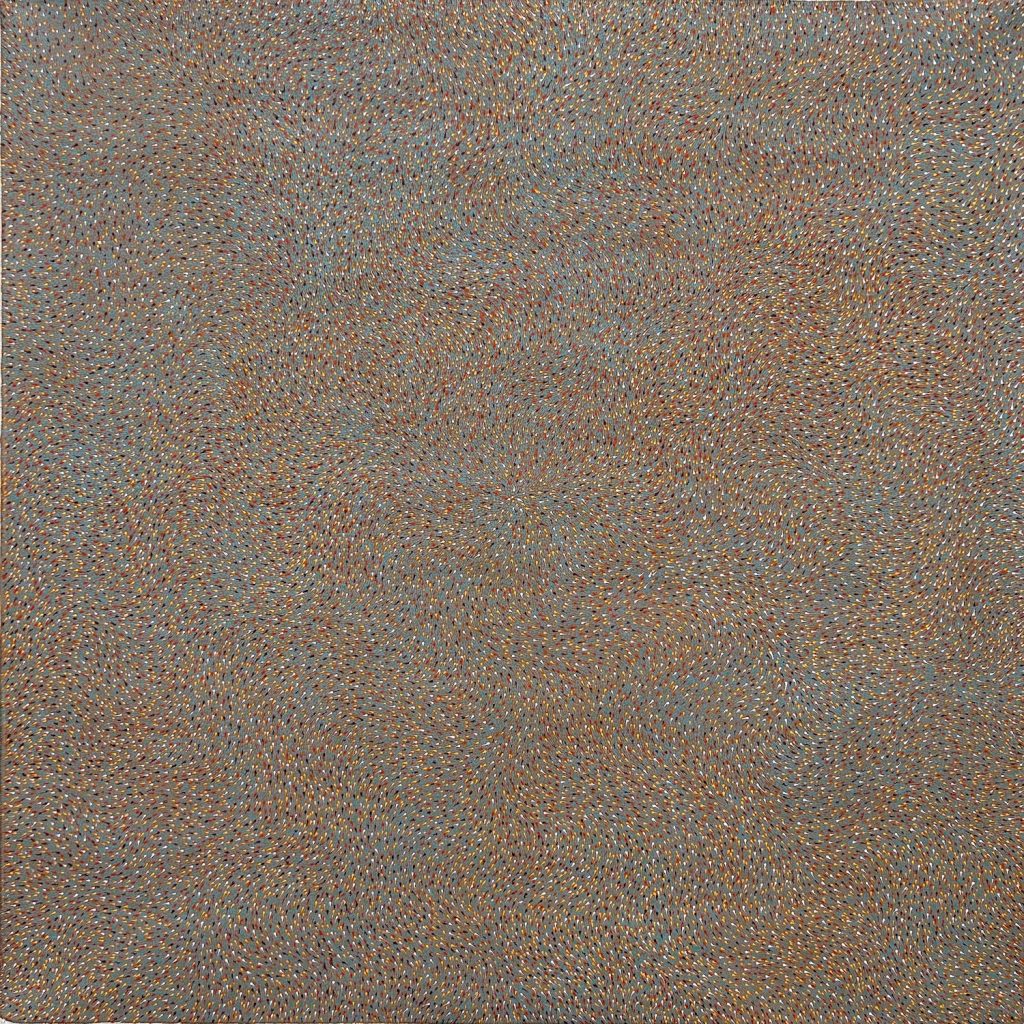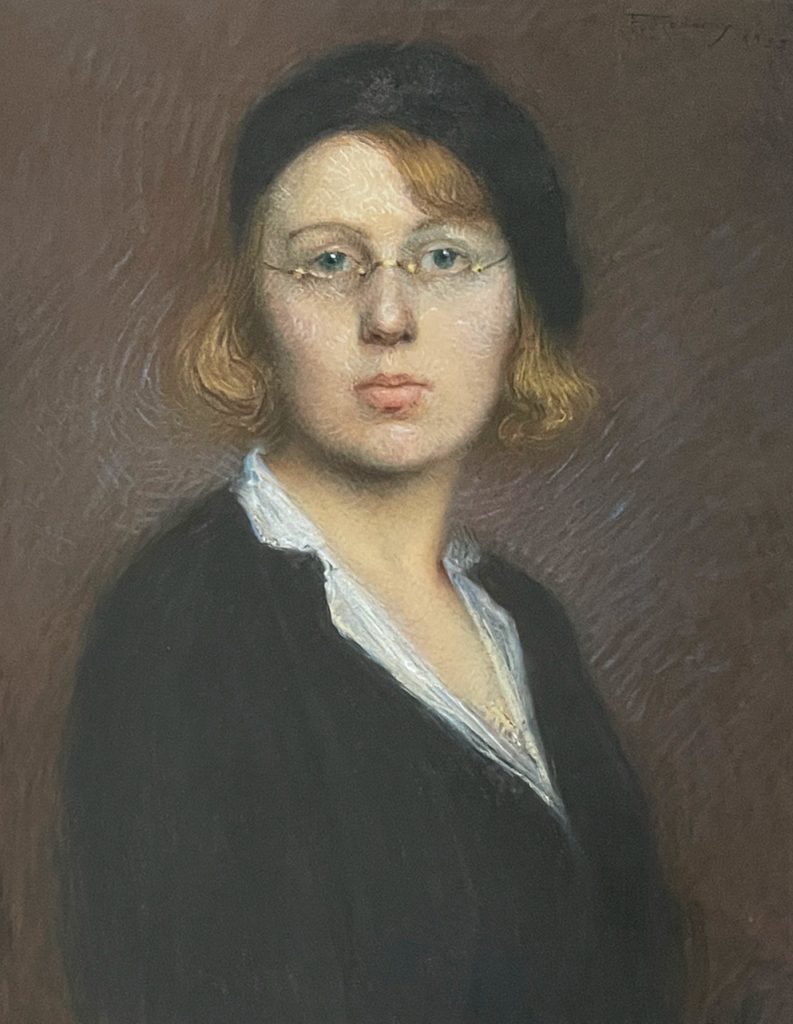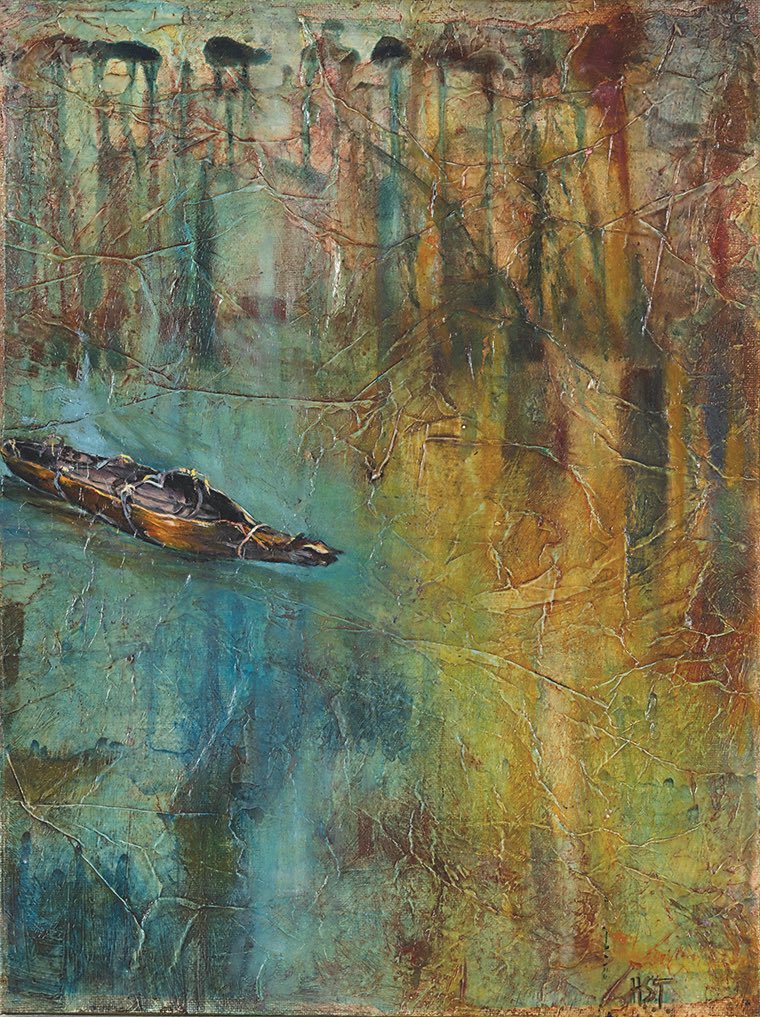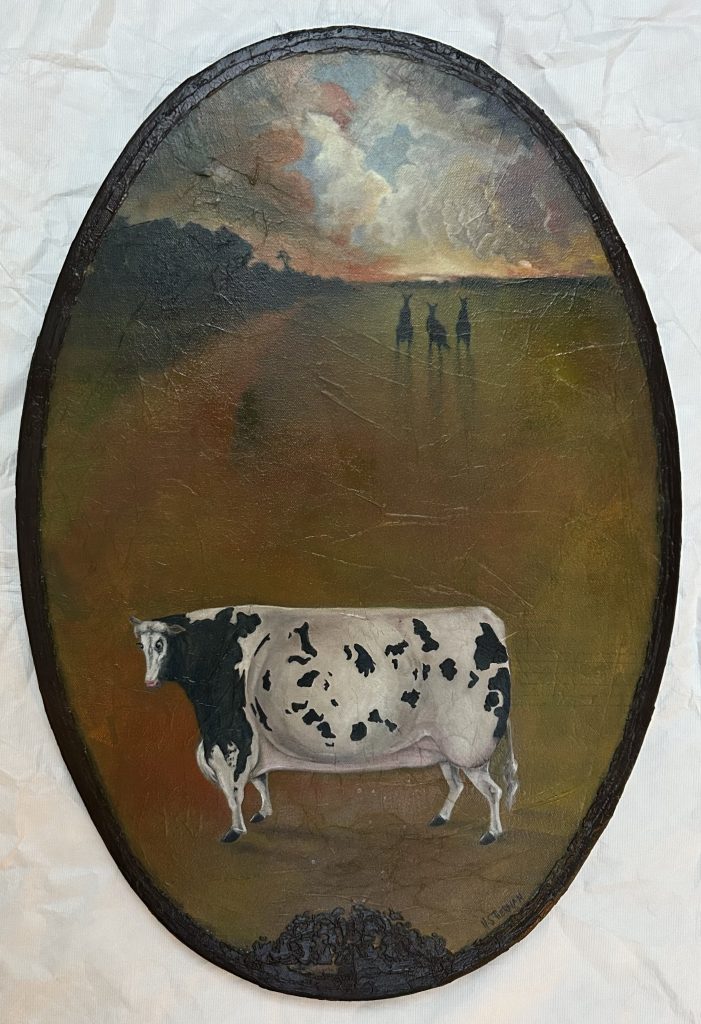In the spirit of this year’s NAIDOC week theme, ‘Keep the fire burning – Blak, loud and proud’, we celebrate the painting of Genevieve Kemarr Loy.

Genevieve Kemarr Loy 1982 – (Anmatyerr) Amperwelkermerr synthetic polymer on linen 92 x 122 cm 223009
Genevieve is a young woman of strength, determination and resilience who continues the family tradition of painting from the Utopia area in remote Central Australia.
Genevieve was driven to start painting at around 12- 14 years old, her curiosity piqued by watching others around her, particularly her dad Cowboy Loy Pwerl and his wives Elizabeth Kunoth Kngwarray and Carol Kunoth Kngwarray, daughters of Nancy Kunoth Kngwarray. As she grew older, she wanted to learn more about the meanings of the mark making and began to ask questions about the motivation for the paintings. Her father spent much time relaying the stories of homeland to her, especially the bush turkey.
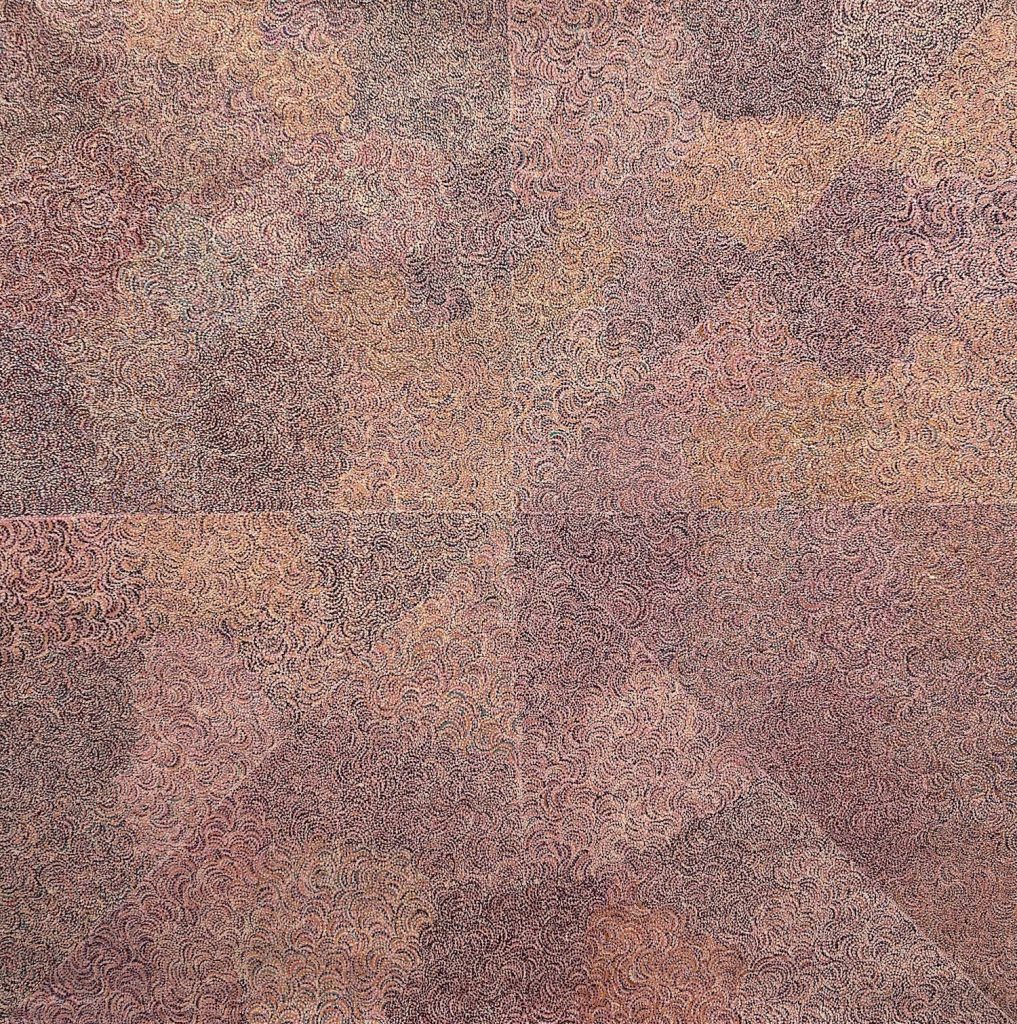
Several years ago, Genevieve moved to Port Augusta to be near her two children, and despite the distance from her country, she continued to paint inspired as always by the flora and fauna of Utopia. Genevieve most often paints the story of Arwengerrp, the Bush Turkey, which has been passed down from her father, himself a collectible artist and important senior elder who sadly died in 2022.
Genevieve has taken on the intricate patterning depicting the tracks the bush turkey makes as it searches for seeds to eat and makes it way to a central waterhole. She infuses the story with her own interpretation, using meticulous dots across the canvas and a harmonious colour palette to create a vibrant, pulsating surface.

Genevieve Kemarr Loy 1982 – (Anmatyerr) Wildflowers 2023 synthetic polymer on linen 200 x 121 cm 223013
Genevieve has more recently made the decision to return to Utopia, continuing to produce beautifully detailed paintings. Just as she learnt from elders in her family, she finds herself now keeping the fire burning, as the inspiration and teacher to a younger generation.
Genevieve has been recognised as a Finalist in a number of art prizes including The Churchie National Emerging Art Award, 2012 (judge’s award winner); Lloyd Rees Memorial Youth Award, 2009; Blake Prize, 2010, 2013; Fisher’s Ghost Art Award, 2010; Hawkesbury Art Prize, 2012; Paddington Art Prize, 2012, 2017; The Waterhouse Natural Science Art Prize 2013; Alice Prize 2014, 2016; Grace Cossington Smith Art Award, 2018; Redlands Art Awards, 2018; Ravenswood Australian Women’s Art Prize 2020, 2024.
View selected paintings on our website.

Genevieve Kemarr Loy 1982 – (Anmatyerr) Bush Turkey 2024 synthetic polymer on linen 117 x 75 cm 224017






